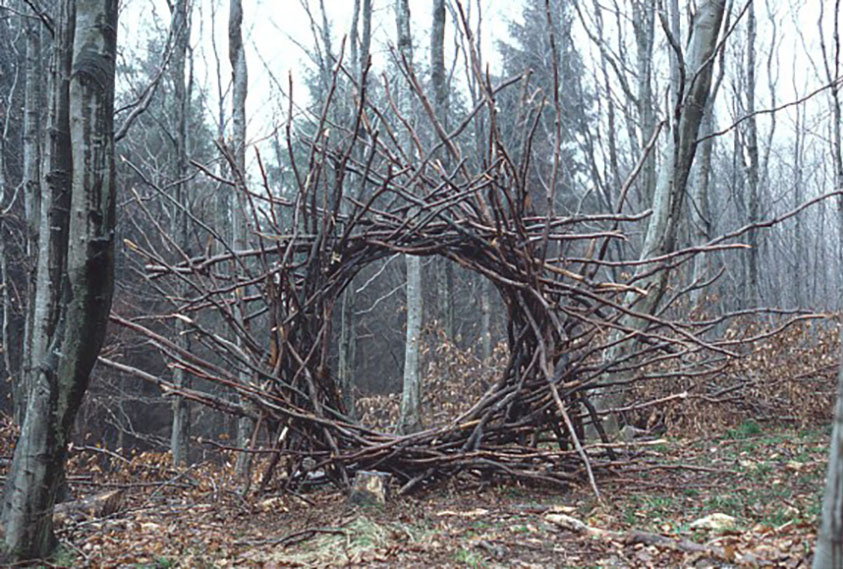Woven Branch Circular Arch, Dunfrieshire, Scotland, 1986 by Andy Goldsworthy
Here we are on the tipping point of welcoming in the next cycle of increasing light and sun. Just back from the visiting family in Glastonbury, England and Tavestock, Devon, I am in the remembrance of the continued traditional festivities of rural English life. Thin roots and tendrils of the Greenman hold fast into the bedrock allowing a slow revival of Mummers, wassailing, Morris dancing and Homanay (Scotland) There was a time when every one of the twelve days of Solstice were celebrated with specific food, ritual and community celebration.
When I look at the history of the mid-winter Solstice ceremonies throughout England, Wales and Scotland, I am taken with the richness and variety. The mid winter point where the long nights expressed a stationary sun.. the people would come out to see the Mummer plays (street actors) reenact the story of dark versus light, special food celebrated and eaten as in mince pies, twelfth night cake, eggnog, Christmas pudding and mulled wine. There is the Yule log, mistletoe, fire festivals and Morris dancers (medieval hip hop) in the streets. There was guising (dressing as animals) and honoring them as in the Straw Bear Parade in Wittlesey or in street appearances of the hobby horse or deer antlers on top of dancers heads. There was wassailing and the making of the Wassail bowl with the ritual honoring of the apple orchards, there was a Feast of Fools ( a day of doing things backwards and invitation to be silly)…and lots of drinking ale and Meade. Whole pigs were roasted remembering the even older days of the wild boar. All this revelling and celebrating would move through the New Year’s celebration bringing in the new fire with the Yule log, and First Footing. First Footing is an old tradition of crossing another’s threshold after midnight of New Years Eve, being the first to cross brought good luck along with a small gifting of salt to the house. The light they brought with, lit the candles in the house bringing in the hopes and dreams for the following new year.
The twelve days of Christmas were said to be a time when the supernatural realm was close and the Wild Hunt, or the Fairy Host rode through the nights and could be heard in the wind. Each day was named and celebrated including December 28th, seen as a day to be very careful in. A day to ensure nothing untoward would happen that would be reflected in the following year. The festivities continued after the New Years Hognamay. The conclusion of ceremony, Ancient ways of belonging and ancient connections to animals as sacred and the compelling, need to bring joy and light into the mid winter time. There was a Father Christmas known earlier as Nicholas of Myra and a Mother Christmas, Modranicht. Prior to the birth in Bethlehem, Jesus the archetype was known to the Celts as the Midwinter King. There would have been a time when each village carried their local winter traditions to be celebrated prior to hunkering down into the second half of the winter season. A time of diminished stores of food and a measuring of the days, as a weak but returning sun heralds the first snowdrop to break above ground, soon to be followed by crocus. Hope is reborn.
“In the bleak mid-winter
Frosty wind made moan;
Earth stood hard as iron,
Water like a stone;
Snow had fallen, snow on snow,
Snow on snow,
In the bleak mid-winter
Long ago.”
Christina Rosetti
